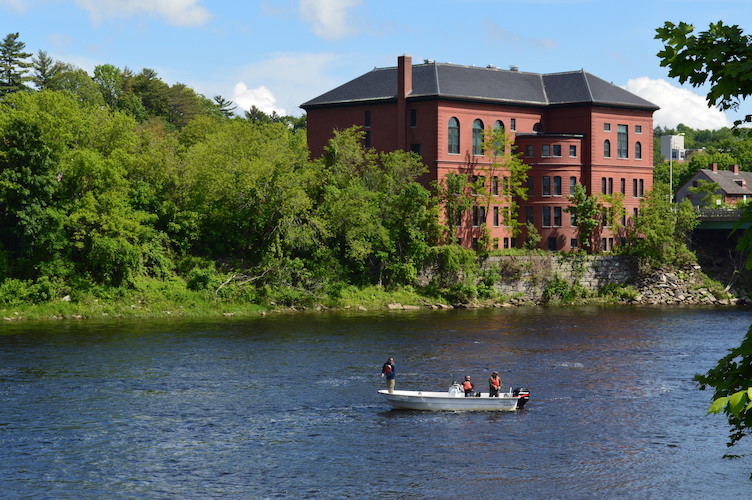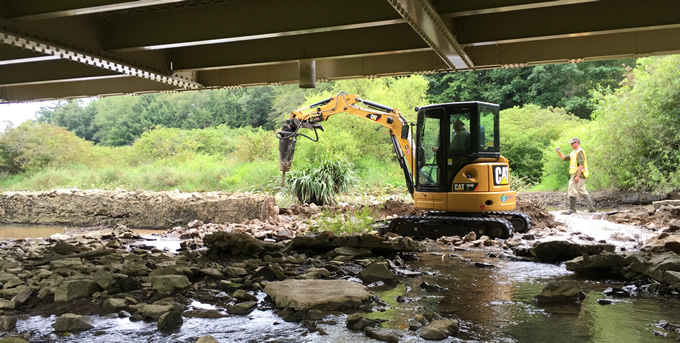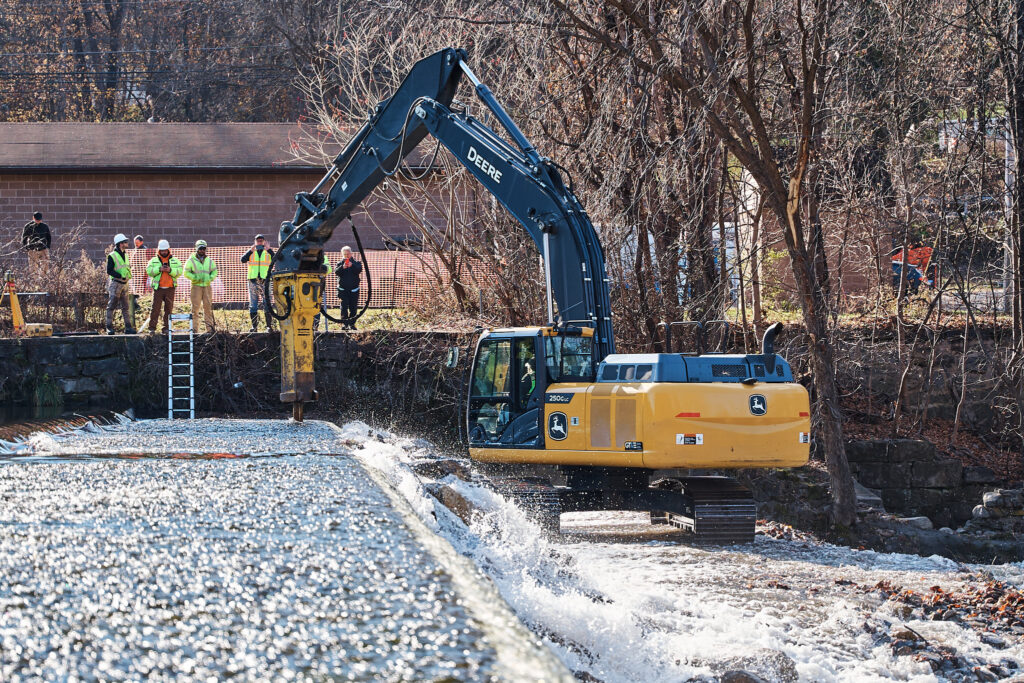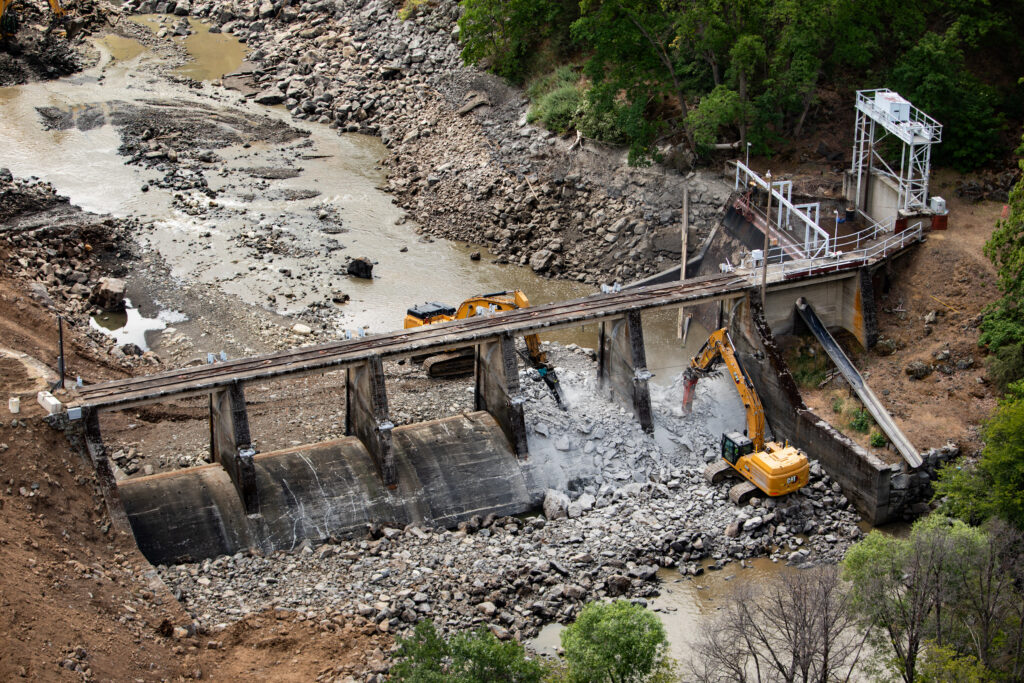6 ways to make dams easier to remove
American Rivers has 20 years of experience freeing rivers from unnecessary dams. Here’s our advice on how to take the dam removal movement to the next level.
It’s a thrilling thing to watch: A big yellow machine rolls into the river and tears down a dam that has done so much damage to fish and wildlife habitat and often to the community. In a surprisingly short period of time, the bugs flourish, the fish come back and the river returns to life.
As Brian Graber, American Rivers’ senior director of river restoration, told me recently: “There’s no faster, more effective way to bring a river back to life than by taking a dam out. It’s pretty cool that we’re able to do something that makes a real, meaningful difference.”

This year marks two decades since excavators turned Maine’s Edwards Dam to rubble. That simple act kickstarted a nationwide movement to free other rivers by removing dams. The pioneering efforts of American Rivers and local partners set the stage for freeing the Kennebec River. Together, we convinced the Federal Energy Regulatory Commission that removing Edwards was better for local communities and wildlife than continuing to maintain the dam.
Since then, 1,199 dams — including the complex Bloede Dam on Maryland’s Patapsco River — have been removed by American Rivers and other groups. But like all complex infrastructure projects, removing a dam is almost never accomplished by a single organization.
More than 90,000 dams still block American rivers and streams, many no longer serving their original purpose. Some are drowning hazards, while others damage river health and water quality. With some states, like Pennsylvania, removing 25 to 35 outdated dams per year while other states remove none, we must make ask ourselves: What will truly make the greatest difference in making not just some but hundreds of projects happen?

The answer is that we must create an ecosystem that makes removing dams more efficient and commonplace. To this end, we have developed a set of six criteria necessary to successfully remove more dams:
- Strong leadership: You need strong leaders at the state level to break down the barriers to removing dams. Several states, including Massachusetts, Pennsylvania and New Hampshire, have staff dedicated to removal projects — and a lot more projects get done in those places.
- Incentives for dam owners: An effective dam safety office must recommend dam removal as a good option for unsafe dams and facilitate dam removal projects.
- Funding: It takes money to do the assessments, designs and implementation necessary to remove dams. Financial support must be available for multiple years and must cover everything from feasibility to construction.
- Regulators: State and federal regulators generally view dam removal as a positive approach. But because taking out a dam significantly changes the local environment in the short term, regulators struggle to fit dam removal projects into regulations that were designed to reduce change to the environment. Regulators must recognize the leeway available within most existing regulations to allow for projects that result in long-term benefits.
- Well-trained project managers: There must be enough project managers to sustainably shepherd all projects through the challenging and involved process.
- Momentum. As we like to say, “Every project makes the next project easier.” The more projects you do, the more engineers, regulators, and agencies understand the process and the more contractors know how to work in rivers.

As we look toward the next 20 years, Brian and his team are imparting what they’ve learned by sharing our six-factor approach with as many project managers, state agencies and local groups as possible. By holding dozens of workshops and trainings, and inspiring others to envision a future of free rivers, we are helping make dam removal easier, more cost effective and more doable on a growing number of rivers.
“I really like facing a super challenging issue, coming up with a complex plan, implementing the plan and seeing it actually work,” Brian told me. “We’ve figured out how to tackle and break down the barriers to dam removal. And we’ve seen huge growth. In a geeky way, that’s what excites me.”




4 responses to “6 ways to make dams easier to remove”
I suggest adding this 7th way: Public Participation. Public support is necessary for more success. How about a proactive program to involve more public’s & provide them info & convince them that they & their children’s children will enrich their lives with the rivers they help restore?
Didn’t realize how beneficial dam removal was to the ecology until I read this article. You inspire me to learn more.
Great job! You are an example for us.
Removing the dam, assuming there is not another one upstream, immediately restores the natural hydrology and sediment regime of the river without doing any other work to the river. The river takes over the work.